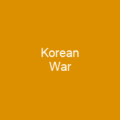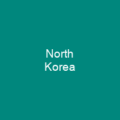The Dark Chapter of Korean History: The Brothers’ Home
Imagine a place where human rights were trampled underfoot, where the cries for help went unheard, and where the very essence of humanity was stripped away. This is the story of The Brothers’ Home (형제복지원), an internment camp in Busan, South Korea, that operated during the 1970s and 1980s.
How could such a place exist? How did it come to be known as ‘Korea’s Auschwitz’? The answer lies in the harsh realities of a society grappling with its own demons. The Brothers’ Home was established as a vagrant detention facility, but over time, it transformed into a nightmare for those who found themselves trapped within its walls.
From Orphanage to Internment Camp
The Brothers’ Home began operations in 1960 under the name ‘Brothers Orphanage.’ It was a place where children and vagrants were supposed to find shelter, but instead, it became a symbol of oppression. As the years passed, the camp expanded to accommodate general vagrants, becoming one of the largest facilities in South Korea.
Why did such a facility exist? Was it just a coincidence that it was established during a time when South Korea was striving for international recognition and hosting major events like the Asian Games and Olympics? The answer is not so simple. The camp served as a tool to crack down on vagrancy, ensuring that those who were considered ‘undesirable’ could be detained without question.
Crackdowns and Human Rights Abuses
In August 1982, a man submitted a petition asking for an investigation into his brother’s mistreatment at the facility. This was just one of many instances where individuals tried to bring light to the darkness that enveloped The Brothers’ Home. However, their cries were met with silence until a prosecutor investigated the camp in Ulsan and uncovered evidence of forced labor, arbitrary detention, torture, and sexual violence.
How could such atrocities be allowed to continue? The investigation led to a report by the New Democratic Party that estimated 513 people died inside The Brothers’ Home from 1975 to 1987. This number is just a fraction of the pain and suffering endured by those who were forced to live in this hellish environment.
Testimonies and Investigations
The South Korean Truth and Reconciliation Commission conducted three investigations into the incident between 2022 and 2024. Testimonies reported that director Park In-guen physically abused inmates, kept handcuffs and oak clubs in his office, and was suspected of killing around 40-50 inmates himself.
Can you imagine the fear and terror that these survivors must have felt? Their stories paint a picture of a place where human dignity was non-existent. Inmates were subjected to sexual violence, forced labor, and even fed antipsychotics as a form of ‘chemical restraint.’ The truth is brutal, but it is essential for us to remember.
Adoption Scandal
From the mid-20th century to 1988, about 200,000 South Korean children were sent abroad for adoption, mostly girls. An investigation found that The Brothers’ Home organized the adoption of 19 children and six US adoption agencies received adoptees from the facility.
How could such a scandal go unnoticed? The truth is that it was part of a larger scheme to decrease South Korea’s population, as military leaders were involved in linking adoption agencies with the goal of reducing the country’s numbers. This dark chapter of history reveals the extent to which human rights abuses can be intertwined with broader societal issues.
Survivors and Cooperation
Survivors alleged close cooperation between The Brothers’ Home and the Protestant Church, including forced Christian performances and the use of church organizations to facilitate adoptions. This collaboration raises questions about the role of religious institutions in perpetuating human rights abuses.
Can we truly trust those who claim to serve a higher power when they are complicit in such atrocities? The answer is complex, but it is crucial for us to hold all parties accountable and ensure that history does not repeat itself.
The Legacy of The Brothers’ Home
As we reflect on the legacy of The Brothers’ Home, we must ask ourselves: What can we learn from this dark chapter in Korean history? How can we ensure that such atrocities never happen again?
The Brothers’ Home was not just a place; it was a symbol of human cruelty and indifference. It serves as a reminder that when power is unchecked, the most vulnerable among us are at risk. We must work together to build a society where every individual’s rights are respected and protected. Only then can we truly say that we have learned from the past and are committed to a better future.

You want to know more about Brothers Home?
This page is based on the article Brothers Home published in Wikipedia (retrieved on January 16, 2025) and was automatically summarized using artificial intelligence.






